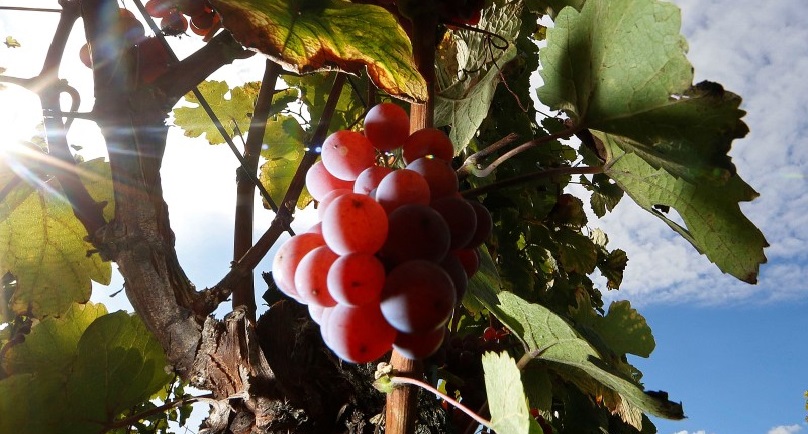Image:Bunches of grapes hang from the vine in a vineyard in Alsace, before their harvest in Orschwihr, France, in this September 26, 2015 file photo. REUTERS/Jacky Naegelen/Files
![]()
By Sybille de La Hamaide and Pascale Denis
PARIS (Reuters) – Good news for wine drinkers: a leading international body says grape vines are a hardy little number and can survive climate change, at least over the medium term.
Earlier harvesting, changes in grape varieties and new wine-making processes have already helped counter the impact of the harsher weather hitting vineyards across the globe, the head of the International Organization of Vine and Wine (OIV) says.
“Wine producers all over the world have adapted to the changes and the plant has a capacity of adjustment that you can find in no other plant,” OIV Director General Jean-Marie Aurand told Reuters in an interview.
He cited the example of the Canary island of Lanzarote where vines are grown in lava which absorbs overnight dew – virtually the sole water they receive in the summer – and releases it during the day.
In China, he said, more than 80 percent of production acreage is located in regions where temperatures can drop below minus 30 degrees Celsius (-22 degrees Fahrenheit) in winter. Growers cover vines to protect them and uncover them when spring comes.
Some winemakers, meanwhile, are shifting the way they produce wine.
Australia’s Treasury Wine Estates Ltd, for example, is testing technology to water vines underground and is expanding fermentation capacity to combat the impact of climate change on its vineyards around the world.
“You can adapt to climate change or you can react to it,” Treasury Wine Chief Supply Officer Stuart McNab said at a Reuters Global Climate Change Summit earlier this month. “You’ve got time to react, but you’ve got to know what’s happening.”
OUTLOOK
Despite the worries of many producers, notably in the Champagne region, Aurand was not very concerned for the future of wines sold under protected designation labels that tie them to the soil and viticulture practices of a specific region such as the Appellation d’Origine Controlee (AOC) system in France.
“We have today other strains and cultivation techniques, so I’m not worried in the short or mid-term on this question, which does not mean we should not consider the issue of climate change as a whole,” Aurand said.
It was too early to give an outlook for 2050, he said.
The OIV sees global wine output rising 2 percent in 2015 to 275.7 million hectoliters (mhl), Aurand said.
A 10-percent rebound in Italy’s output meant it would regain its position as leading world producer after losing it to France last year due to a weather-hit grape crop.
OIV gave an initial consumption forecast for 2015 at between 235.7 and 248.8 mhl, down from around 240 mhl last year. As opposed to western European countries where consumers are drinking less wine, consumption would rise again in the United States, which became the world’s largest consumer in 2013, it said.
(Reporting by Sybille de La Hamaide and Pascale Denis; Editing by Andrew Callus/Jeremy Gaunt)
Copyright 2015 Thomson Reuters. Click for Restrictions.


